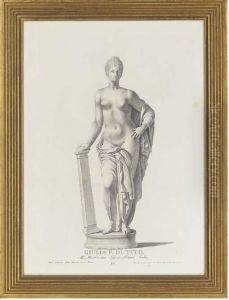Antonio Giovanni Faldoni Paintings
Antonio Giovanni Faldoni, born in 1690, was an Italian engraver whose work is emblematic of the Rococo period, a stylistic phase in art history that emphasized ornate decoration, lightness, and elegance. Faldoni's career is notable for its contribution to the dissemination of Rococo aesthetics through the medium of engraving, a technique that involves incising designs onto a surface. His engravings often replicated the works of contemporary painters and sculptors, serving as a critical medium for the transmission of artistic ideas across Europe.
Faldoni's work was characterized by its intricate detail, accuracy, and the ability to capture the essence of the original artworks. He was particularly adept at translating the delicate features of Rococo art into his engravings, a task that required exceptional skill given the complexity of Rococo designs. His engravings covered a wide range of subjects, including mythological scenes, landscapes, and portraits, all of which were imbued with the light, playful elements typical of the Rococo period.
Despite the prominence of his work during his lifetime, Antonio Giovanni Faldoni's name is not as widely recognized today as some of his contemporaries. This is partly due to the nature of engraving as a reproductive art form, which was often seen as secondary to original artistic creation. However, Faldoni's contributions to the art world were significant, as his engravings played a crucial role in the spread of Rococo style and aesthetics. He remained active in the art scene of his time until his death in 1770, leaving behind a legacy that, though underappreciated, is an essential part of the history of European art.
